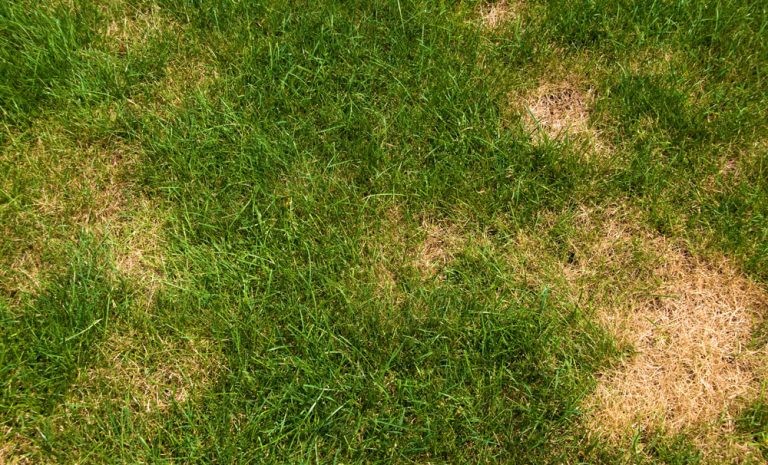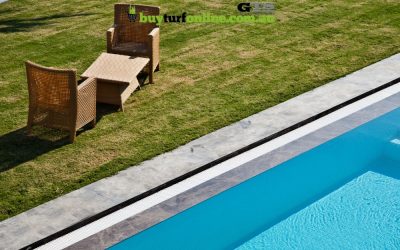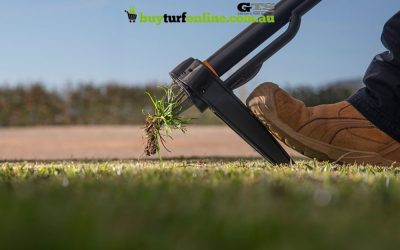Why Is My Zoysia Grass Dying? Common Causes and Solutions to Revive It
Your Guide to Repairing Zoysia Grass
Sir Grange Zoysia is a premium choice for Australian lawns due to its shade tolerance, fine texture, and low maintenance requirements.
However, despite being a resilient grass variety, it can still face challenges that lead to damage or decline.
We’ll run through some of the most common reasons why your Sir Grange Zoysia lawn may be struggling in Australian conditions, along with tips to identify and address these issues.
Poor Soil Quality and pH Imbalances
Acidic or alkaline soils
Sir Grange Zoysia thrives in neutral to slightly acidic soils, but if the pH is too high (alkaline) or too low (acidic), it can stunt growth and cause yellowing.
A pH imbalance makes it harder for the grass to absorb nutrients, leading to poor health. To work out if your soil is too acidic or alkaline, soil testing can help determine if a pH adjustment is needed.
Nutrient deficiencies
Your soil needs regular fertilising to ensure that your Sir Grange Zoysia grass gets all of the key nutrients it needs. This includes nitrogen, phosphorus, and iron.
A lack of these nutrients causes Sir Grange Zoysia grass to yellow, thin out, or stop growing altogether. Regular fertilisation with a slow-release fertiliser designed for Zoysia can correct deficiencies and promote healthier growth.
Read more about fertilisers for Sir Grange lawns.
Overwatering and Underwatering
Overwatering
Excessive watering can suffocate the roots, leading to root rot and fungal diseases. Shaded areas of your lawn are particularly susceptible to overwatering.
Signs of overwatering include thinning grass and waterlogged patches. It’s essential to water deeply but infrequently, allowing the soil to dry out between sessions to promote deep root growth.
Not only will this help with overwatering but it will make your lawn more drought tolerant.
Underwatering and drought stress
In areas with water restrictions or during hot Australian summers, Sir Grange Zoysia can suffer from drought stress, leading to browning and thinning. The zoysia grass may also turn crispy or take on a greyish color.
Ensuring consistent deep watering is crucial to maintaining a healthy lawn, especially during dry periods. As mentioned, this deep but infrequent watering will help build drought tolerance over time.
Soil Compaction and Thatch Build-Up
Compacted soil
In high-traffic areas or clay-rich soils, compaction can restrict root growth, leaving the lawn weak and patchy. To test if your lawn is compacted, you can drive a screwdriver into the soil.
If it easily goes 100mm into the ground, you’re soil is fine. However, if it’s difficult to do this, your soil is compacted.
Compacted soil limits water and nutrient penetration, causing your Sir Grange Zoysia grass to stop growing and even start to die. Aerating the lawn helps relieve compaction and promote healthier root development.
Excessive thatch
A build up of thatch can suffocate your Sir Grange Zoysia, making it difficult for water, nutrients, and oxygen to reach the roots. And, if your thatch gets too damp, it can start to harbor pests and diseases.
Regular dethatching helps maintain airflow and reduces disease susceptibility, allowing your Sir Grange Zoysia grass to thrive. We’d recommend dethatching every year or two to keep it at a good thickness.
Pests Common in Australian Lawns
Armyworms
Armyworms are notorious for quickly devouring large sections of grass, especially during Australia’s warmer months. Early signs of Armyworms (which are actually caterpillars) include chewed grass blades and rapid browning of your grass.
Treating with appropriate insecticides or encouraging natural predators can help control these pests.
African Black Beetle
The larvae of African black beetles feed on Zoysia roots, causing browning and dead patches. Regular lawn inspections can catch infestations early, and treating them with targeted pesticides can prevent widespread damage.
Diseases Affecting Sir Grange Zoysia in Australia
Brown Patch lawn disease
Common in Australia’s warm, humid climates, brown patch disease is identifiable by circular brown patches that can spread rapidly in wet conditions.
Improving air circulation and reducing moisture by watering early in the day can help prevent this fungal issue. Especially for severe cases, we’d recommend using a fungicide to get rid of Brown Patch as quickly as possible.
Leaf Spot and Dollar Spot
Similar to Brown Spot, these diseases present as small discoloured spots that expand and weaken the grass. Thatch reduction, proper fertilisation, and occasional fungicide use can help manage these issues and restore lawn health.
Improper Mowing Practices
Scalping
Mowing your Sir Grange Zoysia grass too short, especially during hot or dry periods, can scalp your lawn. This exposes the soil and stresses the grass.
It’s important to keep the mower height at an appropriate level to prevent scalping and only ever mow up to a third of the lead blade at a time.
Dull mower blades
Using dull mower blades tears the grass rather than cutting it cleanly. This leaves ragged tips that are more vulnerable to damage and disease.
Regularly sharpening mower blades ensures clean cuts and helps the lawn recover faster from mowing.
Environmental Stressors
Heat stress
Australia’s extreme heat can cause heat stress in Sir Grange Zoysia grass, especially in areas with full sun or reflective surfaces.
Heat stress can cause wilting, browning, or thinning in your lawn. In extreme cases or without enough water, you’ll be left with dead grass.
Providing sufficient water during heatwaves can reduce stress and promote recovery. You should also build up your lawn’s drought tolerance over time to reduce the impact of heat stress.
Frost damage
Unexpected frosts in southern regions of Australia can damage Sir Grange Zoysia lawns, turning the grass brown or causing it to die back.
While Zoysia is somewhat frost-tolerant, covering vulnerable areas during cold snaps and maintaining proper lawn care practices can help minimise frost damage.
Excessive shade
While Sir Grange Zoysia is known for its shade tolerance, too much shade from trees, fences, or buildings can still limit growth and lead to thinning. Regular pruning of trees and improving airflow can reduce excessive shading and help the grass thrive.
How to Repair Zoysia Grass
If your Sir Grange Zoysia lawn is looking patchy, thin, or unhealthy, there are several steps you can take to repair it.
Begin by assessing the underlying cause—whether it’s compaction, poor soil quality, or pest issues—and then implement targeted solutions like aeration, topdressing, or filling bare spots with fresh turf.
Proper fertilisation and pest management also play crucial roles in lawn recovery.
For a detailed breakdown of effective repair methods and tailored solutions for Sir Grange Zoysia lawns, read our full guide on how to repair Sir Grange Zoysia grass.
read more!
recent posts
Poolside Turf: Choosing and Maintaining Grass Around Pools
There’s nothing quite like stepping out of a swimming pool onto soft, lush grass. But when it comes to finding the best grass for around a pool, not all lawns are created equal. Chlorine pools, heavy foot traffic, and the unforgiving Australian sun can take a toll on...
Keeping Your Lawn Green and Healthy During the Summer Heat
Discover the best grass options for your lawn with our complete guide. Make informed choices for a lush, healthy yard. Read more to find your ideal grass!
Summer Lawn Weeds: Prevention and Management
Discover the best grass options for your lawn with our complete guide. Make informed choices for a lush, healthy yard. Read more to find your ideal grass!

Our Turf
TifTuf Bermuda
Buy Turf Online © 2019 All Rights Reserved. | Proudly Designed and Developed by Sydney ICT




